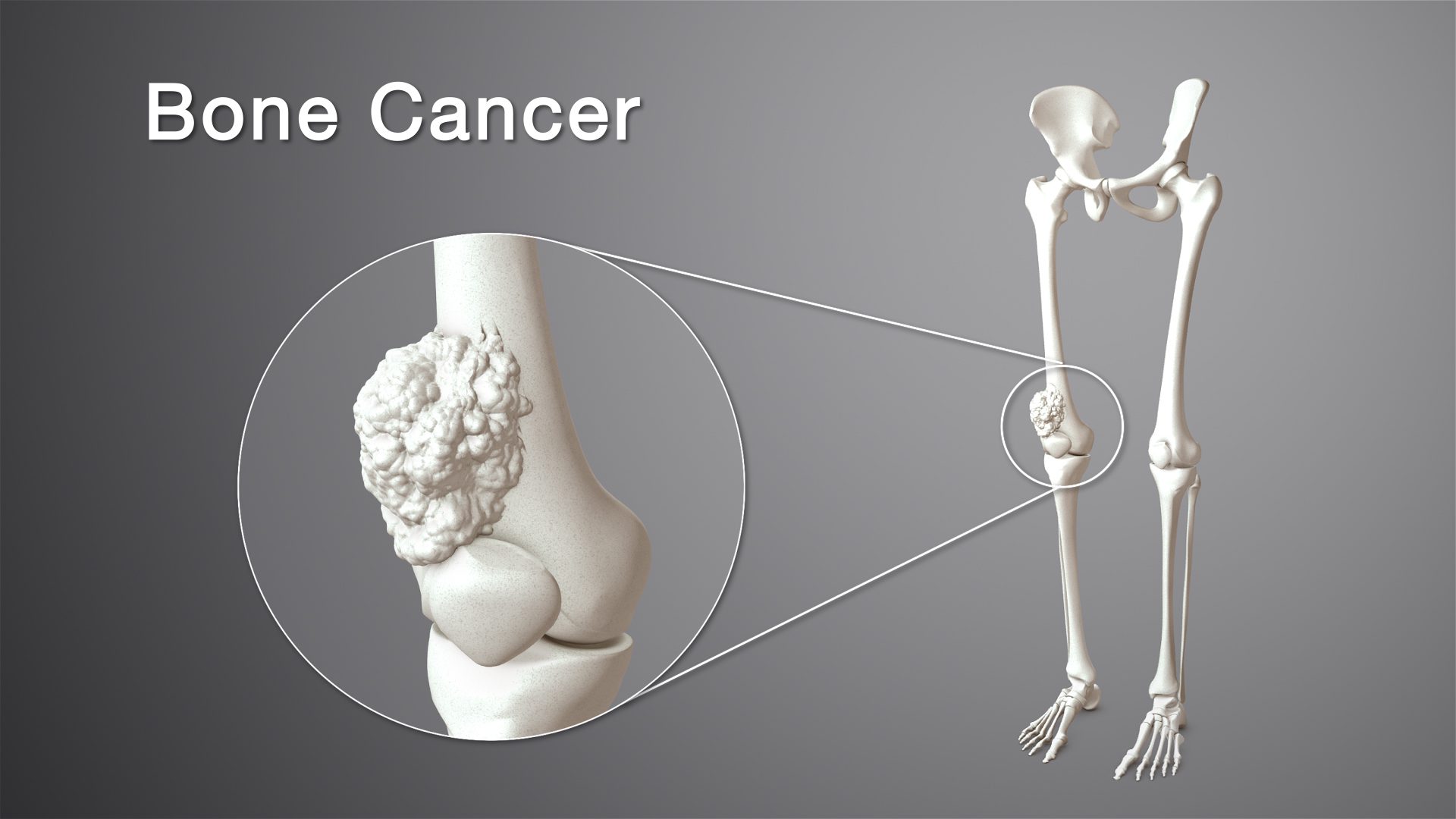What Is Bone Cancer?
Bone cancer refers to malignant tumors that originate in the bone tissue. These are known as primary bone cancers. Secondary bone cancers, or bone metastases, occur when cancer spreads to the bones from other parts of the body, such as the lungs, breasts, or prostate
Types of Primary Bone Cancer
- Osteosarcoma: Most common in children and young adults, typically affecting the long bones.
- Ewing Sarcoma: Often found in adolescents and young adults, affecting the pelvis, femur, or chest wall.
- Chondrosarcoma: Occurs mainly in adults, originating in cartilage cells.
- Chordoma: A rare cancer that usually occurs in the spine or skull base
Symptoms of Bone Cancer
Symptoms can vary depending on the tumor’s size and location. Common signs include:
- Bone pain: Often worsening at night or during activity.
- Swelling and tenderness: Near the affected area.
- Fractures: Bones weakened by cancer may break more easily.
- Fatigue and weight loss: General symptoms associated with many cancers.
It’s important to consult a healthcare provider if persistent bone pain or other symptoms occur.
Diagnosing Bone Cancer
Diagnosis typically involves a combination of:
- Imaging tests: X-rays, MRI, CT scans, and bone scans to detect abnormalities.
- Biopsy: A sample of tissue is examined to confirm cancer and determine its type.
Early and accurate diagnosis is essential for effective treatment planning.
Treatment Options
Treatment depends on the type, location, and stage of the cancer, as well as the patient’s overall health. Common approaches include:
Surgery
The primary treatment for most bone cancers, aiming to remove the tumor and some surrounding healthy tissue. Limb-sparing surgery is often possible, but in some cases, amputation may be necessary.
Chemotherapy
Uses drugs to kill cancer cells, often administered before surgery to shrink tumors or after to eliminate remaining cells. It’s commonly used for osteosarcoma and Ewing sarcoma.
Radiation Therapy
Employs high-energy rays to destroy cancer cells. It’s particularly useful when surgery isn’t feasible or to treat residual cancer post-surgery.
Targeted Therapy
Involves drugs that specifically target cancer cell mechanisms, potentially causing fewer side effects than traditional chemotherapy.
Prognosis and Survival Rates
Prognosis varies based on cancer type, stage, and response to treatment. Early-stage localized osteosarcoma has a five-year survival rate of approximately 76%, while advanced stages have lower rates.
Real-Life Stories
Personal experiences highlight the importance of early detection and innovative treatments:
- Myles Grimmett: Diagnosed at age 5 with osteosarcoma, he underwent a groundbreaking surgery where his leg bone was transplanted into his arm. Now 14, he’s thriving and playing basketball.
- Poppi Frisby: At 12, she was diagnosed with Ewing sarcoma after developing a limp. Despite aggressive treatment, she passed away 16 months later, underscoring the disease’s severity.
Support and Resources
Managing bone cancer involves not just medical treatment but also emotional and psychological support. Resources include:
- Cancer Research UK: Provides comprehensive information on bone cancer.
- American Cancer Society: Offers guidance on treatment options and coping strategies.
- Support groups: Connecting with others facing similar challenges can provide comfort and practical advice.
Conclusion
Bone cancer, while rare, poses significant challenges. Awareness of symptoms, timely diagnosis, and advances in treatment options can improve outcomes. If you experience persistent bone pain or other related symptoms, consult a healthcare professional promptly

